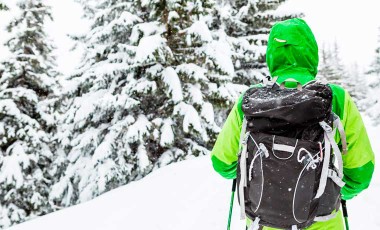When the mercury has dipped to temperatures lower than any living thing should be able to survive in, there are two choices; batten down the hatches, get your warmest socks on and hibernate for the winter under a cosy quilt. Or you can get out your extreme cold weather clothing and gear and brave the elements. Technology in outdoor clothing is constantly improving, so if you can get your frozen hands on the best cold weather clothing then there really is no excuse but to get out there and embrace the chill.
This is good news for outdoor enthusiasts and adventurers, but also great for those who work in the extreme cold or whose daily routine requires stepping into the icy chill. So if you find yourself in the depths of a freezing winter then this guide to extreme cold weather clothing and gear will have you and all your extremities well covered.
Extreme cold weather clothing
Disclaimer: We use affiliate links and may receive a small commission on purchases.
The key to getting the best out of your winter gear is to adopt this tried and tested extreme cold weather clothing system. The principles of the system are basically the same as preparing for the outdoors in any kind of cool weather; dress like an onion! And although it may be tempting to just snuggle into the biggest and bulkiest jacket you can find, it won’t be nearly as warm, or practical, as piling on multiple thin layers. But just any old layer won’t do. The best cold weather clothing layers should include:
Base layers
Base layers should be snug, comfortable and long enough to eliminate any chance of flashing your midriff on bending over or reaching up. Merino is one of the best options for cold weather base layers. It is excellent at wicking away sweat and at regulating your body temperature. But is does take longer to dry than synthetic base layers and some people find it a little itchy.
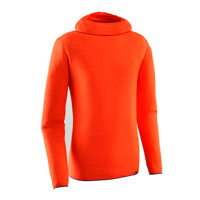
Long sleeved top
Patagonia’s new Merino Air Hoodie is a revelation in thermal base layering. Its merino/synthetic mix and seamless design makes it the ideal base layer for extreme cold weather.
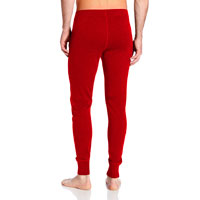
Long Johns
These 100% merino mid weight long johns will be sure to keep you cosy. They are fitted but restrictive, and long enough not expose your ankles to the elements! For those who find merino a little on the itchy side, then Patagonia also do Merino Air Bottoms.
Mid layers
These act to provide another layer of warmth as well as creating pockets to trap warm air. Mid layers should be breathable to minimise excess moisture build up from sweat, and not too thick or heavy so as to restrict movement. Synthetic fleece is ideal for mid layers.
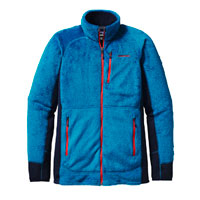
Fleece top
Patagonia’s regulator insulation range provides technical protection from the cold without adding extra bulk or compromising on breathability. This R2 fleece is ideal for super cold conditions, although even warmer R3 and R4 versions are also available.
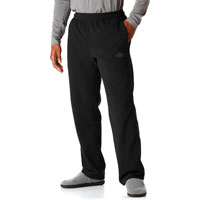
Fleece pants
These 100-weight microfiber fleece pants will provide a comfortable mid layer for your lower half without adding too much bulk or restricting movement. There should still be plenty of room for an outer layer to fit over the top.
Insulation layer
Before you decide on what sort of insulation you should go for, check out our Down versus Synthetic article. In summary, if you are in dry winter conditions a down jacket or hoodie will be ideal. If wet weather will feature, go for synthetic. Either way, your insulation layer should provide excellent warmth to weight ratio, should be lofty (to trap warm air within the insulation), and should fit over a mid layer fleece and under an outer shell comfortably. Ideally it should also have a hood.
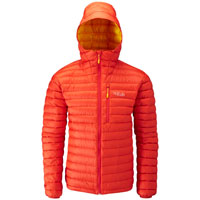
Down jacket
This 750 fill goose down Rab Microlight Alpine jacket provides excellent warmth to weight ratio and although it is highly lofty, it’s still streamlined enough to fit underneath an outer shell.
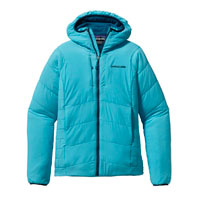
Synthetic jacket
The highly breathable Patagonia Nano Air is an ideal insulation layer if you are very active in the cold. It also has a water repellent shell making it suited to still and mild winter days where wind chill isn’t an issue.
Outer layer
Assuming you’ve nailed your base, mid and insulation layers, your outer layer should seal in all that warmth with a windproof and water resistant shell. These come in two different forms, hard and soft shell. Hard shell jackets and pants should be fully waterproof and windproof, and are often a single layer shell, however insulated versions are available. Soft shells are great at being windproof and water resistant, and are more breathable than hard shells. They are ideal for high energy activities in the cold but less useful in wet conditions.
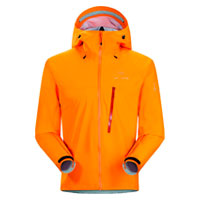
Hard shell jacket
The Arc’teryx Alpha FL jacket provides superior levels of weather protection in a single lightweight shell. The GoreTex lining makes it fully waterproof whilst maintaining good breathability.
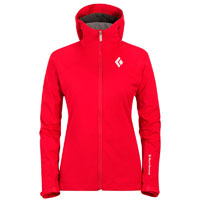
Soft shell jacket
Although not waterproof, Black Diamonds Dawn Patrol LT jacket has an excellent water resistant coating and a good balance of breathability and wind resistance.
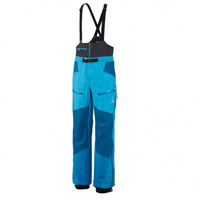
Hard shell pants
Choosing bib-style pants eliminates any drafts or snow sneaking in between your layers. These Mountain Hardware Drystein pants rely on the Dry-Q Elite technology (GoreTex equivalent) for a totally wind and waterproof durable outer shell.
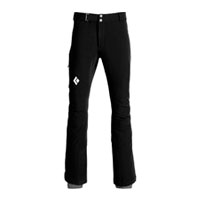
Soft shell pants
These Black Diamond Induction pants offer excellent mobility and stretch. The Windstopper soft shell is also highly breathable and an ideal bit of extreme cold weather gear for being active in.
Extreme cold weather parka
For those less inclined to go down the technical layering route every time you leave the house, then you need to get your hands on a good old fashioned winter jacket. Above all it should be the warmest item of extreme cold weather gear you own! But it should also be weatherproof and comfortable.
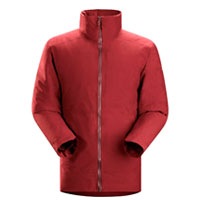
Everyday Parka
Filled with 750 power down the Arc’teryx Camosun Parka has a Goretex waterproof membrane for unrivalled weather protection.
Extreme cold weather clothing for your extremities
Due to their large surface area, your hands and feet are highly susceptible to getting overly cold and potentially frost bitten. And of course your head, nose and face, which are usually totally exposed to the elements, also become very vulnerable as the temperature drops below zero. So get covered up in the right gear to prevent frozen fingers, toes and nose!
Head protection
Although at least one of your jackets should have a hood, it’s still essential to get your head covered with a good windproof hat. Hoods can always go on over the top, but hats provide a much greater range of vision and movement than a hood, and won’t let the wind sneak in either.
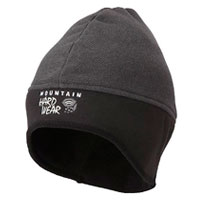
Synthetic hat
The simple design of this Mountain Hardware Dome Perignon Beanie makes it ideal to sit under a hood, or two. The lack of pom-pom is essential for this, and the fleece-lined ear and neck band keeps out the wind nicely.
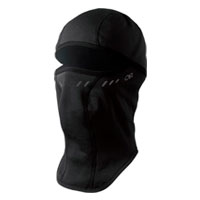
Balaclava
The best way to keep your nose and face protected in extreme cold weather is to go all out with a full face Outdoor Research Ninjaclava. It is made from breathable fleece, that will also wick moisture away, and for a little more air, the opening is easily peeled open.
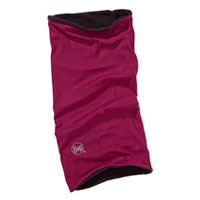
Buff
This is a must on your extreme cold weather gear list. The versatility of the Buff makes it an ideal draft excluder for you neck, head, face or even wrists.
Extreme cold weather gloves
Keeping your hands warm can be a real challenge in the extreme cold, especially if you are doing dextrous tasks that require you to strip down to a thin inner glove. Ideally you should be able to do as many tasks as possible in thick gloves.
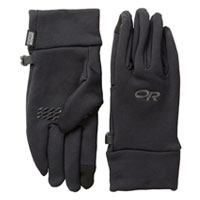
Glove liners
These Outdoor Research thin synthetic liners are good at wicking moisture away from your hands and are breathable and quick drying. They are also touch screen compatible to prevent any unnecessary exposure.
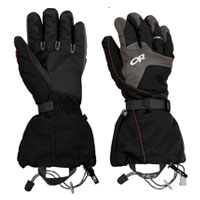
Insulated gloves
With a Gore-Tex lining these waterproof Outdoor Research gloves provide good levels of dexterity. The are highly durable, insulated with a PrimaLoft Gold liner and have adjustable cuffs to keep out the breeze and snow.
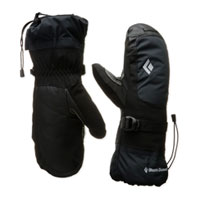
Insulated mittens
These Mercury Mitts by Black Diamond are very similar to the Outdoor Research gloves, but by their nature, create a warmer, cosy cocoon for your pinkies. Try to do anything fiddly with your hands and you’ll seriously struggle.
Extreme cold weather socks
Even the warmest socks on earth will struggle to keep your twinklies cosy when the icy winter sets in. Try layering your socks if one pair isn’t cutting it, making sure you choose something breathable. Also try not to go too thick as your foot still needs to fit inside your boots without restricting blood-flow.
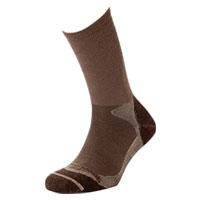
Liner socks
There’s no padding in these thin and simple Lorpen Liner Merino socks. Their sole purpose is to provide an extra layer of warmth below thicker socks whilst the merino wool efficiently wicks away any sweat.
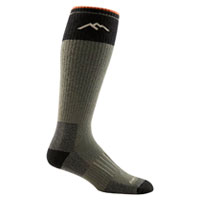
Wool socks
These Darn Tough socks are a merino/synthetic mix to combine the warmth of wool with the stretch and durability of the nylon and lycra. This also helps to keep itchiness to a minimum. Their length is essential when wearing big winter boots.
Winter boots
A good winter boot should not only be insulated throughout the upper, but should also have a good enough sole to stand up to the freezing ground. Being wind and waterproof is essential and a high top is also necessary in snowy conditions.
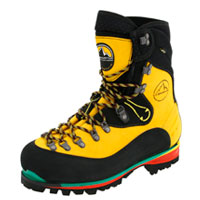
Winter hiking boots
These La Sportiva mountaineering boots will stand up to the cold whilst providing your feet with all the necessary support, grip and comfort one would expect in great hiking boots. They are also crampon compatible.
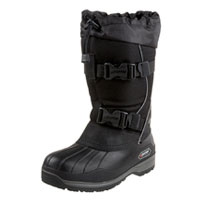
Baffin boots
With a temperature rating of -100ºC/-148ºF, these will be the warmest winter boots you will ever have the pleasure to step into! Their waterproof high tops will take on even the harshest of snowy conditions. Just be sure to wear them with breathable socks!
Other extreme cold weather gear
If you are looking to take your cold weather adventures out into the wilderness for days at a time, then you’ll need a great sleeping bag and sleeping pad. These may be heavier than you might prefer to carry, but survival is key, so go for the warmest option every time.
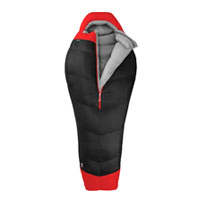
Sleeping bag
The North Face Inferno sleeping bag has a temperature rating of -40ºC. And with 800 fill water repellent down it provides enough warmth for expeditions to some of the coldest place you are ever likely to camp in.
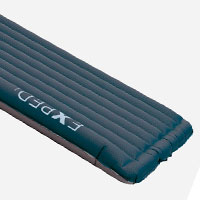
Sleeping pad
With an R-value of 8, the Exped Down mat is one of the warmest sleeping pads on the market. It combines air and down to provide 3.5 inches of cosy warmth that will provide comfort down to -36.4ºF/-38ºC.


